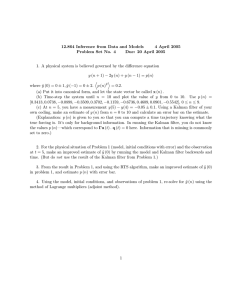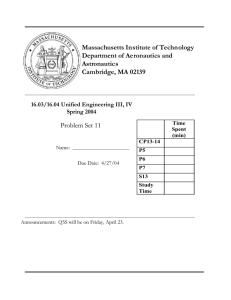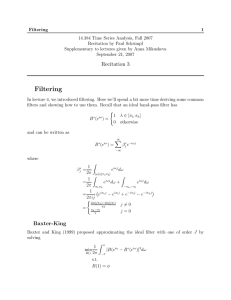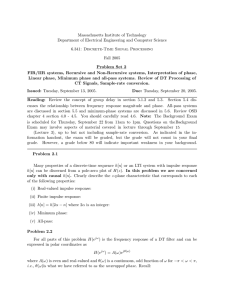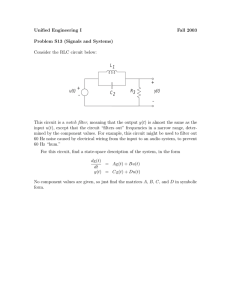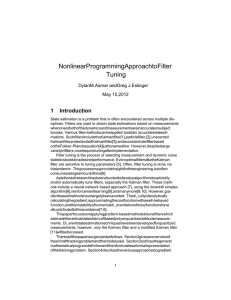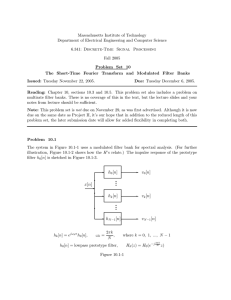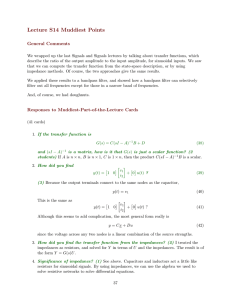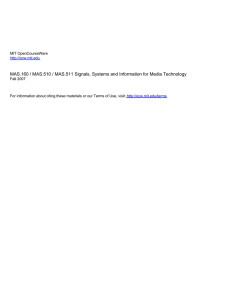Unified Engineering II Spring 2004
advertisement
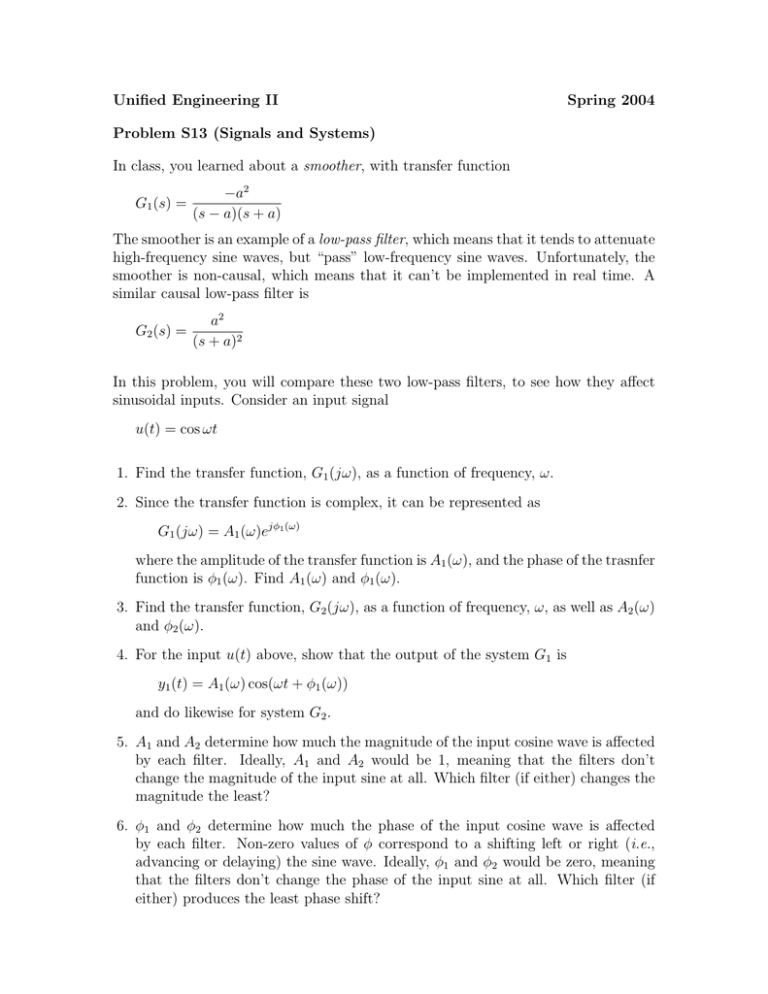
Unified Engineering II Spring 2004 Problem S13 (Signals and Systems) In class, you learned about a smoother, with transfer function G1 (s) = −a 2 (s − a)(s + a) The smoother is an example of a low­pass filter, which means that it tends to attenuate high­frequency sine waves, but “pass” low­frequency sine waves. Unfortunately, the smoother is non­causal, which means that it can’t be implemented in real time. A similar causal low­pass filter is G2 (s) = a2 (s + a)2 In this problem, you will compare these two low­pass filters, to see how they affect sinusoidal inputs. Consider an input signal u(t) = cos ωt 1. Find the transfer function, G1 (jω), as a function of frequency, ω. 2. Since the transfer function is complex, it can be represented as G1 (jω) = A1 (ω)ejφ1 (ω) where the amplitude of the transfer function is A1 (ω), and the phase of the trasnfer function is φ1 (ω). Find A1 (ω) and φ1 (ω). 3. Find the transfer function, G2 (jω), as a function of frequency, ω, as well as A2 (ω) and φ2 (ω). 4. For the input u(t) above, show that the output of the system G1 is y1 (t) = A1 (ω) cos(ωt + φ1 (ω)) and do likewise for system G2 . 5. A1 and A2 determine how much the magnitude of the input cosine wave is affected by each filter. Ideally, A1 and A2 would be 1, meaning that the filters don’t change the magnitude of the input sine at all. Which filter (if either) changes the magnitude the least? 6. φ1 and φ2 determine how much the phase of the input cosine wave is affected by each filter. Non­zero values of φ correspond to a shifting left or right (i.e., advancing or delaying) the sine wave. Ideally, φ1 and φ2 would be zero, meaning that the filters don’t change the phase of the input sine at all. Which filter (if either) produces the least phase shift? 7. Explain why the non­causal filter is preferred in signal processing applications where it can be applied.

